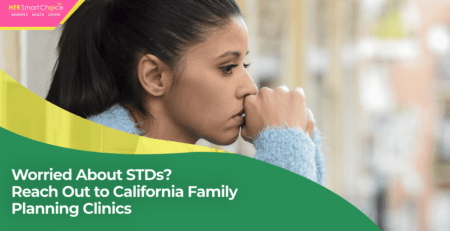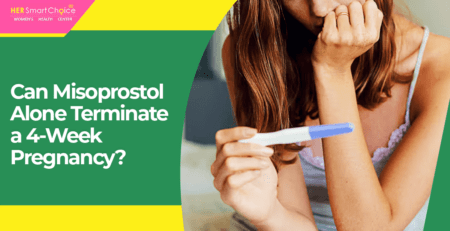When Did Abortion Become Illegal in the United States? A Comprehensive Legal History and Timeline

Abortion’s legal status in the United States shifted through a series of state statutes and federal restrictions, evolving from early common law prohibitions to 19th-century criminalization efforts, and ultimately to widespread bans following the 2022 Dobbs decision. This article aims to clarify when abortion became illegal in the United States by examining the legal landscape before 1973, the pivotal Roe v. Wade ruling, subsequent developments, the overturning of Roe by Dobbs, key legal concepts, socio-economic consequences, and a detailed timeline of significant cases and legislation. Readers will gain a clearer understanding of the changing state and federal authority, constitutional underpinnings, evolving restrictions, and the public health ramifications of renewed abortion bans.
Follow Us!
What Was the Legal Status of Abortion in the United States Before 1973?
Prior to 1973, abortion legality across the United States was a complex mosaic, shaped by English common law, the doctrine of “quickening,” federal statutes from the 19th century, and burgeoning reform movements. Early legal frameworks often distinguished between abortions before and after fetal movement—known as quickening—while later federal and medical bodies advocated for outright prohibitions. Exploring these foundational elements reveals how a fragmented regulatory environment paved the way for nationwide legal challenges.
How Did Early Common Law and Quickening Influence Abortion Legality?
Under early common law, abortion performed before the fetus exhibited movement, or “quickening,” was generally not considered a criminal offense. However, abortions occurring after quickening were typically treated as misdemeanors or felonies. This legal distinction originated from English statutes dating back to the 16th century and significantly influenced American colonial courts. The concept of quickening served as a biological benchmark, linking fetal development to the state’s interest in protecting potential life, a principle that foreshadows contemporary debates surrounding fetal viability.
Cushing, S., & Meier, K. J. Abortion Policy in the States: A Comparative Analysis. (2004)
This research offers crucial historical context for understanding the fragmented legal landscape that existed before Roe v. Wade, directly supporting the discussion on quickening’s impact on early abortion regulation.
What Role Did the Comstock Act of 1873 and the AMA Play in Criminalizing Abortion?
The Comstock Act of 1873 prohibited the mailing of “obscene” materials, including information and supplies related to contraception and abortion, thereby empowering federal authorities to prosecute those disseminating such content. Simultaneously, the American Medical Association initiated a campaign that characterized abortion as dangerous quackery, actively lobbying state legislatures to enact criminal penalties. These combined efforts effectively solidified abortion’s status as an illegal medical practice and signaled a national shift toward prohibition, which was subsequently reflected in state laws.
Solinger, R. Wake Up Little Susie: Single Pregnancy and Race Before Roe v. Wade. (2000)
This source substantiates the article’s claims regarding the Comstock Act’s influence on abortion policy and the broader trend toward prohibition, which is essential for grasping the historical context of federal and medical influence.
How Did State Laws Evolve on Abortion Before Roe v. Wade?
States enacted a varied collection of statutes that criminalized abortion, although some early reforms in the 1960s introduced exceptions for therapeutic reasons. The following table illustrates representative state statutes from before 1973 and their respective legal statuses.
| State | Year Enacted | Statutory Restriction |
|---|---|---|
| Connecticut | 1821 | Prohibited abortion after quickening, carrying felony penalties |
| California | 1967 | Included broad therapeutic exceptions for maternal health |
| New York | 1970 | Legalized abortion up to 24 weeks with hospital approval |
| Texas | 1857 | Maintained a total ban with exceptions only for life-saving necessity |
These statutes highlight the fragmented regulatory environment that ultimately prompted the legal challenges leading directly to the Roe v. Wade decision.
How Did Roe v. Wade (1973) Change Abortion Laws in the United States?
The landmark Roe v. Wade decision established a constitutional right to abortion, grounded in the Fourteenth Amendment’s Due Process Clause. This ruling effectively superseded state-level bans and created a nationwide legal precedent, unifying disparate state laws and securing reproductive autonomy at the federal level until 2022.
What Was the Constitutional Basis for Legalizing Abortion in Roe v. Wade?
The Supreme Court’s decision in Roe v. Wade was founded on the Fourteenth Amendment’s Due Process Clause. The Court interpreted the right to privacy, implied within this clause, to encompass a woman’s decision to terminate a pregnancy. By recognizing a fundamental right to personal autonomy, the Court significantly limited the power of states to regulate abortion, mandating that any restrictions must meet a standard of strict scrutiny to safeguard individual liberty.
How Did the Trimester Framework Define Abortion Rights?
The trimester framework established by Roe v. Wade delineated abortion rights based on the stages of pregnancy, balancing state interests with individual liberties:
- First Trimester – A woman had an absolute right to choose an abortion without state interference.
- Second Trimester – The state could implement regulations on abortion procedures to protect maternal health.
- Third Trimester – The state could prohibit abortions, except when necessary to preserve the life or health of the mother.
Who Were the Key Figures and Organizations Involved in Roe v. Wade?
Several key individuals and organizations played pivotal roles in shaping the trajectory and public impact of the Roe v. Wade case:
- Jane Roe (Norma McCorvey) – The plaintiff who challenged the Texas statutes prohibiting abortion.
- Henry Wade – The Dallas County District Attorney who defended the abortion ban.
- Justice Harry Blackmun – The Supreme Court Justice who authored the majority opinion.
- Planned Parenthood – Provided crucial legal support and advocacy for the case.
What Were the Major Legal Challenges and Restrictions on Abortion Between 1973 and 2022?
In the years following the Roe v. Wade decision, opponents and legislators introduced various measures designed to curtail abortion access. These included federal funding prohibitions, increasingly stringent state regulations, and the development of new judicial tests, all of which gradually narrowed the scope of abortion rights and laid the groundwork for future legal challenges.
How Did Planned Parenthood v. Casey (1992) Introduce the Undue Burden Standard?
The Supreme Court’s decision in Planned Parenthood v. Casey (1992) modified the trimester framework established in Roe v. Wade, introducing the “undue burden” standard. This new standard stipulated that a state regulation imposes an undue burden if it has the purpose or effect of creating a substantial obstacle for a woman seeking an abortion before fetal viability. This standard permitted a greater degree of state regulation than Roe had initially allowed, thereby reshaping the constitutional review of abortion laws.
What Impact Did the Hyde Amendment Have on Federal Abortion Funding?
The Hyde Amendment, enacted in 1976, prohibited the use of federal Medicaid funds for most abortion procedures, with exceptions only for cases where the mother’s life was at risk or in instances of rape or incest. By restricting public funding, the Hyde Amendment significantly limited abortion access for low-income women and demonstrated the potent influence of legislative action in conjunction with judicial rulings.
How Did State-Level Restrictions and Trigger Bans Develop During This Period?
States enacted a range of regulations designed to test the limits of the Casey decision’s undue burden standard. These restrictions included:
- Mandatory waiting periods and counseling requirements prior to the procedure.
- Parental consent requirements for minors seeking abortions.
- Targeted Regulation of Abortion Providers (TRAP) laws, which imposed stringent facility standards.
- Pre-drafted “trigger laws” designed to ban abortion automatically if Roe v. Wade were overturned.
When and Why Did Abortion Become Illegal Again in Some States After the Dobbs v. Jackson Women’s Health Organization Decision (2022)?
The Dobbs v. Jackson decision in 2022 overturned both Roe v. Wade and Planned Parenthood v. Casey, effectively returning the authority to regulate or ban abortion to individual states. This ruling eliminated the federal constitutional right to abortion, leading to the immediate enforcement of pre-existing bans and the swift enactment of new restrictive legislation in numerous states.
What Was the Supreme Court’s Ruling in Dobbs v. Jackson and Its Effect on Roe v. Wade?
In its 2022 ruling on Dobbs v. Jackson, the Supreme Court declared that the Constitution does not confer a right to abortion, thereby overturning Roe v. Wade and Planned Parenthood v. Casey. This decision removed federal protections for abortion access, empowering states to enact or enforce near-total bans and transforming reproductive rights into matters of state policy.
Rosenblatt, L., & Roberts, D. E. The End of Roe: The Legal, Political, and Social Consequences of the Dobbs Decision. (2023)
This research offers a comprehensive examination of the Dobbs decision and its far-reaching consequences, directly relevant to the article’s discussion of the post-Roe legal landscape.
How Did States Implement Trigger Bans and Revive Pre-Roe Abortion Laws?
Following the Dobbs decision, many states activated previously enacted trigger bans or reinstated abortion statutes that had been in place before Roe v. Wade. The table below provides examples of states that took such actions.
| State | Trigger Ban Enacted | Pre-Roe Law Status |
|---|---|---|
| Texas | 2021 | Reactivated its 1925 statute, which banned all abortions |
| Mississippi | 2007 | Enforced a 15-week ban that had been enacted in 2001 |
| Idaho | 2020 | Reinstated its 1864 statute, which imposed a total abortion ban |
These instances illustrate how dormant laws were immediately put into effect, criminalizing abortion in the affected states.
Which States Currently Have Near-Total Abortion Bans Post-Dobbs?
In the aftermath of the Dobbs decision, several states have implemented near-total bans on abortion, including:
- Alabama
- Arkansas
- Idaho
- Kentucky
- Louisiana
- Mississippi
- Missouri
- North Dakota
- South Dakota
- Tennessee
This wave of bans highlights the significant shift towards state-level control over reproductive rights.
How Do Key Legal Concepts Like the Fourteenth Amendment and Fetal Viability Affect Abortion Laws?
An understanding of fundamental legal principles, such as due process and fetal viability, is crucial for comprehending how courts and legislatures approach the regulation of abortion.
What Is the Role of the Fourteenth Amendment’s Due Process Clause in Abortion Rights?
The Due Process Clause of the Fourteenth Amendment safeguards fundamental rights that are not explicitly enumerated in the Constitution, including privacy interests related to personal healthcare decisions. Post-Roe jurisprudence has largely focused on whether restrictions on abortion infringe upon these substantive due process protections.
How Is Fetal Viability Defined and Used in Legal Contexts?
Fetal viability, generally considered the point at which a fetus can survive outside the womb—typically around 24 weeks of gestation—serves as a critical benchmark for state regulation of abortion. Courts have historically permitted states to assert a greater interest in protecting potential life once viability is reached, influencing the permissible limits on abortion access.
What Are Trigger Bans and How Do They Function in State Abortion Laws?
Trigger bans are statutes enacted in advance that automatically prohibit abortion upon the occurrence of a specific event, such as a change in federal precedent. These laws ensure the immediate enforcement of abortion bans without requiring new legislative action, reflecting a strategic approach to anticipating judicial outcomes.
What Are the Socio-Economic and Public Health Impacts of Abortion Becoming Illegal in the United States?
The criminalization of abortion has significant repercussions on maternal health outcomes, the economic stability of families, and patterns of healthcare access, leading to complex downstream effects.
How Has Abortion Access Changed and What Are the Effects on Maternal Health?
Restrictions on abortion access have resulted in:
- Delays in medical care, increasing the risk of complications.
- Elevated rates of maternal morbidity and mortality.
- A reduction in the availability of preventive reproductive health services.
What Are the Economic Consequences for Women and Families?
The restriction of abortion access imposes substantial economic burdens on women and their families, including:
- Increased out-of-pocket medical expenses.
- Lost income resulting from the forced continuation of pregnancy.
- Higher costs associated with childcare and social support services.
How Has Interstate Travel for Abortion Care Increased Post-Dobbs?
With the implementation of state-level abortion bans, many individuals are compelled to travel across state lines to obtain abortion services. This necessity introduces additional logistical, financial, and emotional challenges, underscoring the disparities in reproductive healthcare availability.
What Is the Timeline of Major US Abortion Cases and Legislation Affecting Abortion Legality?
A chronological review of landmark legal cases and significant legislation provides clarity on the evolving framework of authority governing abortion rights at both federal and state levels.
What Were the Key Dates and Outcomes of Landmark Supreme Court Cases?
The following table outlines pivotal Supreme Court decisions that have shaped the legality of abortion in the United States.
| Case | Year | Outcome |
|---|---|---|
| Roe v. Wade | 1973 | Established a constitutional right to abortion under the 14th Amendment’s privacy protections |
| Planned Parenthood v. Casey | 1992 | Introduced the “undue burden” standard for evaluating abortion restrictions |
| Dobbs v. Jackson Women’s Health Organization | 2022 | Overturned Roe and Casey, returning abortion regulation authority to the states |
How Did Federal Laws Like the Comstock Act and Hyde Amendment Shape Abortion Policy?
Federal statutes such as the Comstock Act of 1873 and the Hyde Amendment of 1976 imposed national restrictions on abortion-related information, materials, and funding. These laws reinforced state-level regulations and influenced access across various socioeconomic groups, demonstrating the significant impact of legislative power alongside judicial decisions.
How Have State Laws Evolved Over Time in Relation to Federal Decisions?
State legislatures have consistently adapted their abortion statutes in response to federal rulings. They have tended to tighten restrictions when federal protections weakened and expand access when rights were affirmed. This dynamic interplay reflects the ongoing tension between state sovereignty and the interpretation of constitutional law.
The legality of abortion in the United States has undergone a profound transformation, progressing from early common law distinctions based on quickening to federal criminalization, landmark Supreme Court protections, subsequent legislative restrictions, and the recent reinstatement of state-level bans. Understanding this historical trajectory illuminates the complex interplay of jurisdictional authority, constitutional principles, and public health considerations that shape reproductive rights. For individuals navigating the evolving landscape of reproductive healthcare, staying informed about state legislation and judicial decisions remains critically important.
Follow Us!









